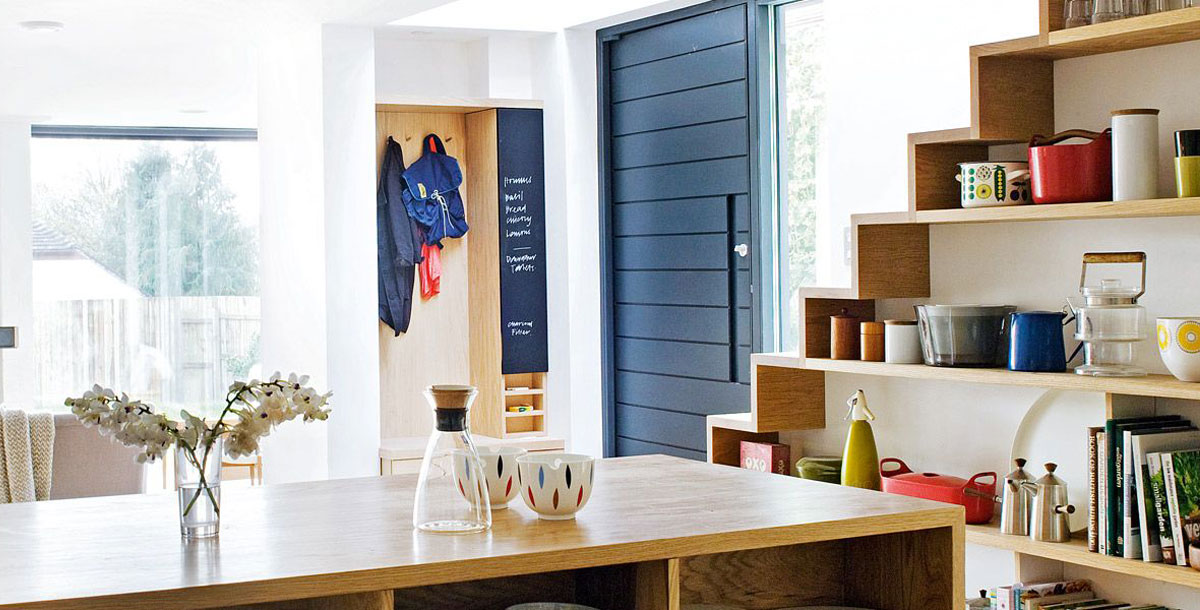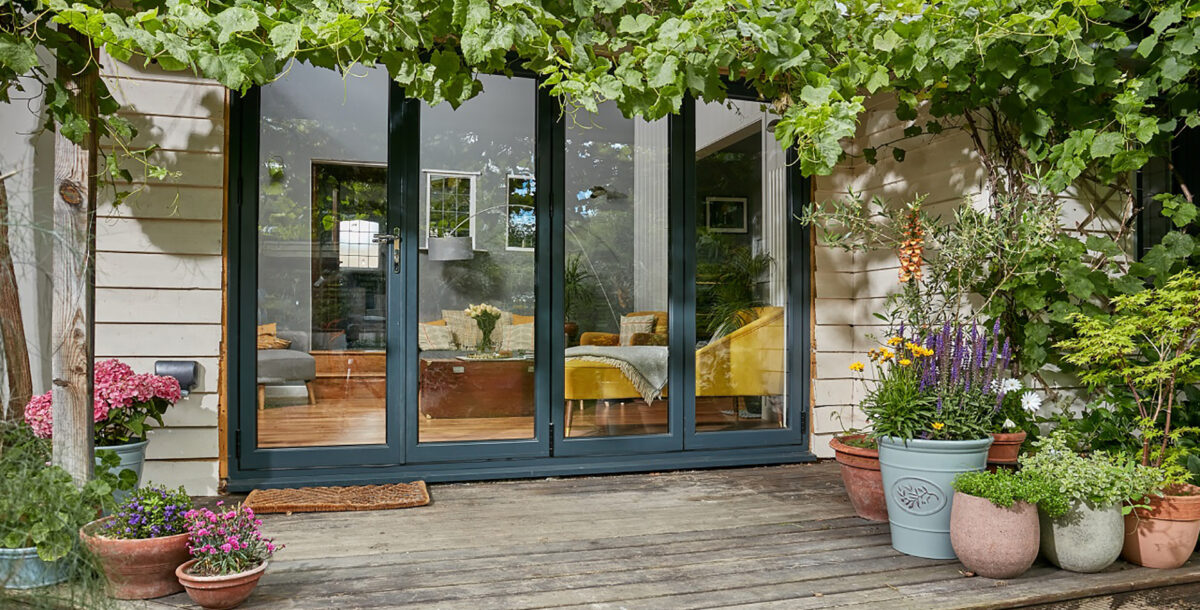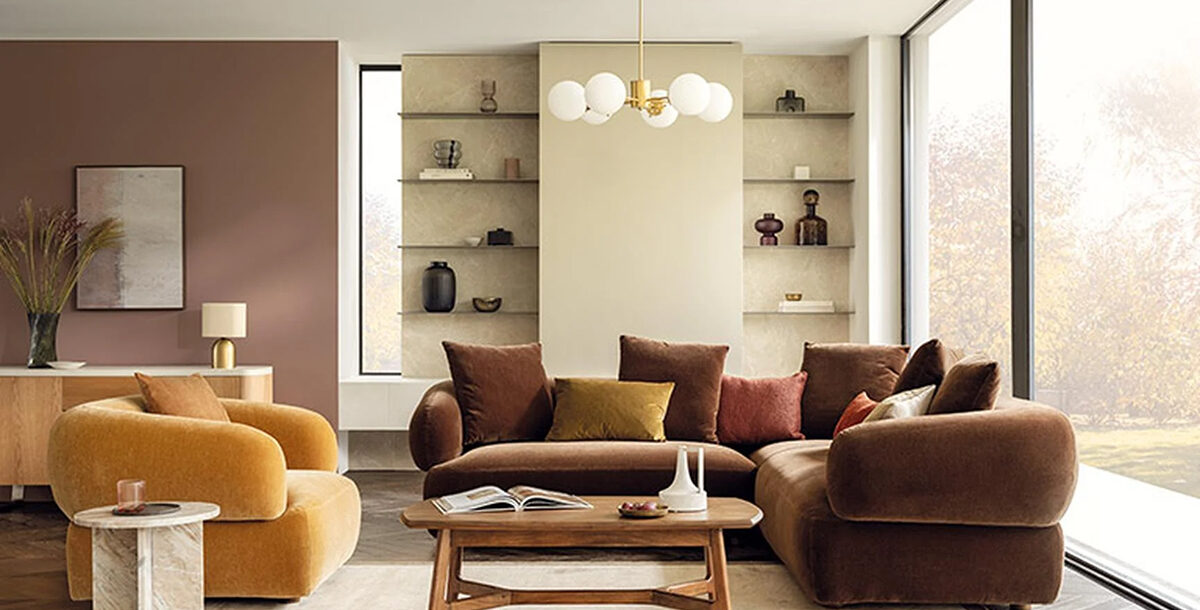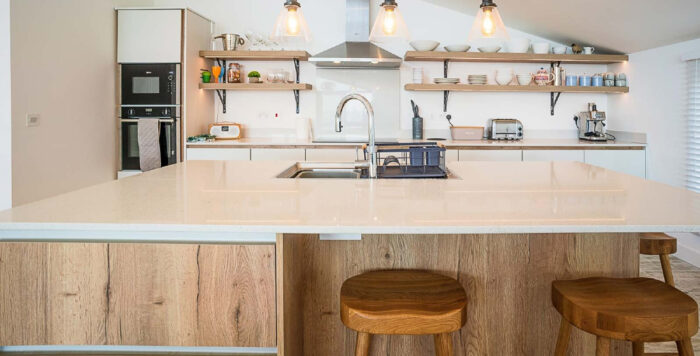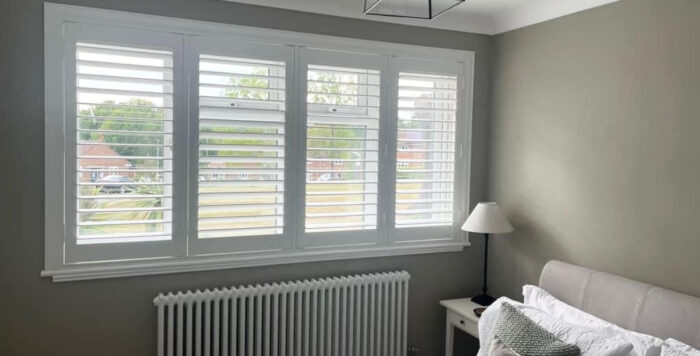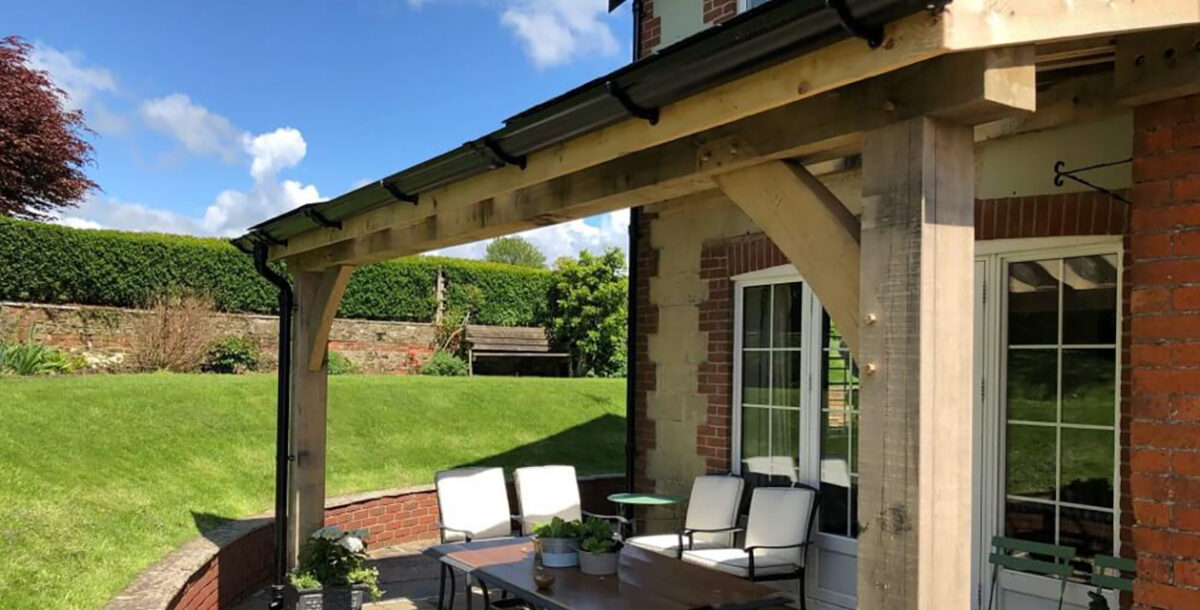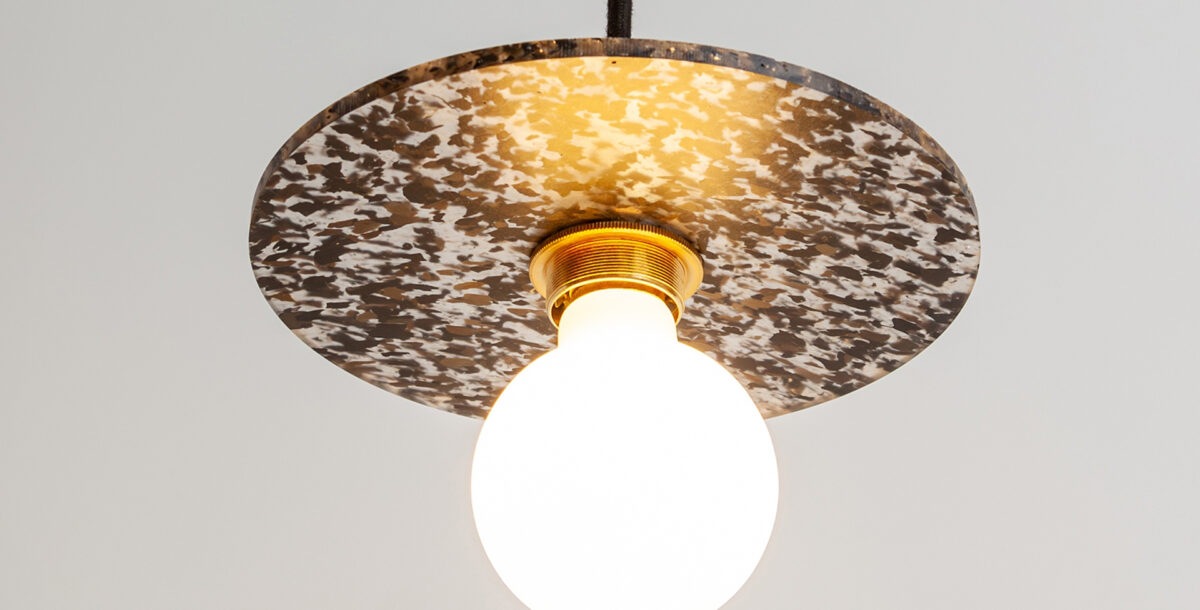Create more storage space in your home
Build bespoke designs into your home to create streamlined, clutter-free storage spaces.
Nineteenth-century designer William Morris famously said, ‘Have nothing in your house that you do not know to be useful, or believe to be beautiful.’
But with kitchen gadgets, children’s toys, buggies and bikes to contend with, that sentiment can be hard to put into practice. A more realistic route to a stylish, functional home comes in the form of super-storage.
Whether you’re extending, renovating or building from scratch, incorporating built-in cupboards into your interior design is an essential aspect of almost any project. Whatever the size of your property, good storage can be the difference between a frustrating, cluttered place and a hardworking one that’s easy and relaxing to live in.
While freestanding furniture options can be eye-catching and effective, built-in designs will optimise every last bit of available space and tend to result in an interior that feels larger and more open.
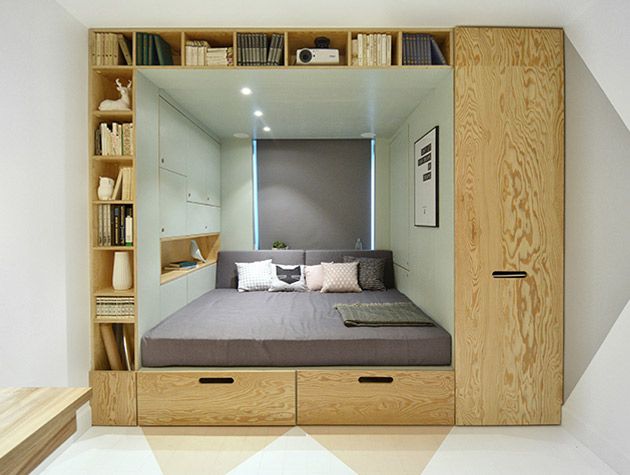
Image: Int2 (int2architecture.ru)
Back to basics
Before beginning your project, think carefully about the things you want to store in your home. Work through each room and make an inventory of the items you need to conceal and those you want to be on show, taking into account their sizes and shapes.
Consider the demands of each area – hallways come with a lot of clutter and benefit from tall cupboards and storage benches, while kitchen cabinets that are in constant use need to be quick and easy to access, making cupboards that slide out of the wall a practical option.
One of the best things about custom-built storage is that it gives you the opportunity to dictate every aspect of its design – for easily accessible shelving, measure how high you and your family members can comfortably reach and factor this into your plans. If you have particular ornaments that you know will take centre stage in an open unit, take them into account when deciding how big to make your shelves.
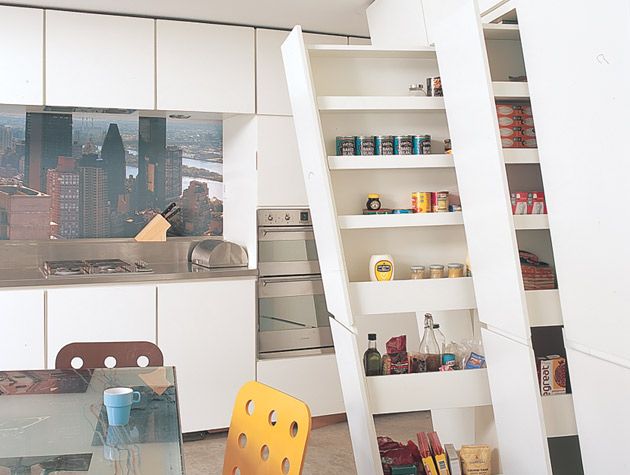
Image: Andrew Stanley Woodworking (asww.co.uk)
Aim high
In a small room, where floor space is precious, a floor-to-ceiling run of cabinets along the length of a wall will offer a huge amount of storage in relation to its footprint. Shallow, tall cabinetry will look sleek and streamlined, and is ideal for creating maximum space with a minimal aesthetic impact. This works particularly well in bedrooms or kitchens, which tend to come with the most clutter. Opt for handleless units in composite materials for a crisp, barely-there effect or choose wooden doors with a mixture of open shelves and closed cabinets for a cosier feel.
In particularly tall areas, consider fitting a library-style ladder as part of the design to make accessing the top shelves more practical; in loft rooms build cabinets into the slope of the eaves to make the most of zones that would otherwise be unused.
Open up
Sometimes, you might like to have lots on display as well as hidden away – in a living room, for example, books, mementos and art will look great on show, so sleek open shelving is key. Opt for recessed shelves to save room, and choose units that are partially open with some closed-off compartments for toys, games and media equipment that you will want to keep out of sight.
In a period home, the alcoves either side of a fireplace are ideal for fitted joinery – cover an unused chimney breast with shelving for additional storage. They are normally 30cm deep, so if you build a 60cm-deep unit across the whole wall, you’ll still have enough room at the front for open bookshelves as well as deeper, covered cupboards either side. Consider push fittings on the doors instead of handles to create a wall panelling effect.
Deep, open shelves can feel gloomy, so add lighting to built-in open units by hiding strips of light behind fascias. This will illuminate your books and ornaments with the added benefit of creating indirect lighting for the whole living area.
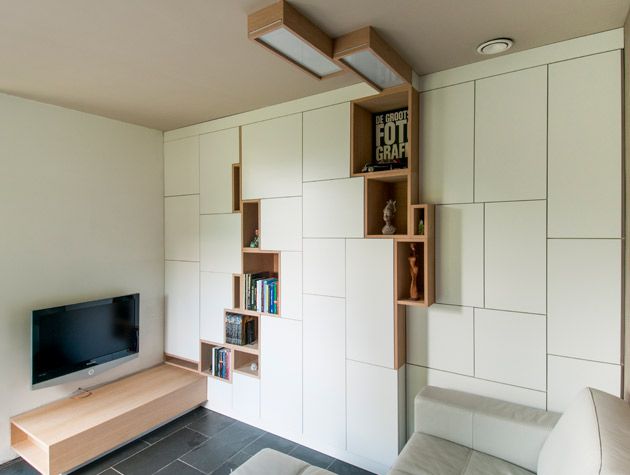
Image: Filip Janssens (+32 485 679 833; lipjanssens.com)
Going underground
Storage doesn’t have to be shelving – make your home work harder by tucking secret cubbyholes into any corner you can find. Plan this type of storage at the beginning of a design, as it can be harder to retrofit. Go for less obvious places – above a doorway, in structural pillars, mini alcoves, or even under the floor with a lift-up trapdoor. Remember that underfloor storage will be within the reach of children, so for a family friendly option choose a soft-closing lid rather than a trapdoor that slams shut.
A well-style spiral wine cellar is a worthwhile investment for anyone with a vintage collection that needs to be kept in top condition. If you’re planning a new staircase, incorporating further storage into the stairs is a practical idea – under-the-stairs cupboards are a tried and tested favourite, but try building storage boxes into the treads themselves.
Take a seat
If you’re looking for somewhere to store non-breakables such as shoes, extra cushions or children’s toys, storage benches or seating can be a stylish, multifunctional option, essentially giving you an enormous chest to throw items into without it getting in the way. They look good as stand-alone pieces or incorporated into a wider fitted furniture system to add some contrast in height to shelves and cabinets. Build one under a windowsill to create a relaxing reading nook, or in a hallway, where storage is always needed and a spot to sit down can come in handy for putting on shoes.
Built-in storage benches are also a suitable height for children to be able to access – and put away – their toys easily, so they’re the perfect addition to a child’s bedroom, where stylish cushions and throws will give them a cosy feel.
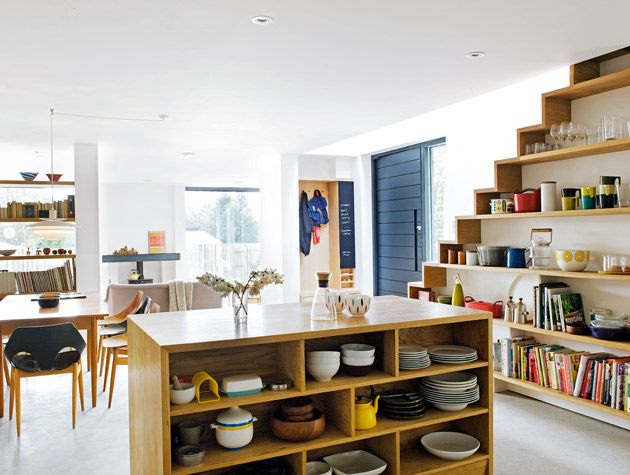
Image: Kathryn Tyler (linea-studio.co.uk)
Better bathrooms
Often the smallest room in a house, with walls taken up by towel rails or radiators, bathrooms need compact, hard-working storage solutions. The space around WCs and basins is often wasted, so consider built-in options. Adding a wall of storage around the cistern, for example, will allow you to conceal it and create space above it – perfect for extra bathroom accessories and cleaning products, or even utility appliances. You can do the same around a washbasin, with a wall of storage around the sinks, creating space beneath for cosmetics, and a flat surface on top for everyday items.
Alcoves built into shower walls are great for keeping soaps and shampoos within easy reach, and any space between the foot of your bath and the wall can be filled in with a flush storage unit, which will double as a spot to sit.

Image: Chapel Joinery (01427 753 858; chapel-joinery.co.uk)
Photography Jos Bergen; Darren Chung; John Merkl; Jefferson Smith; Chris Tubbs; Mel Yates

